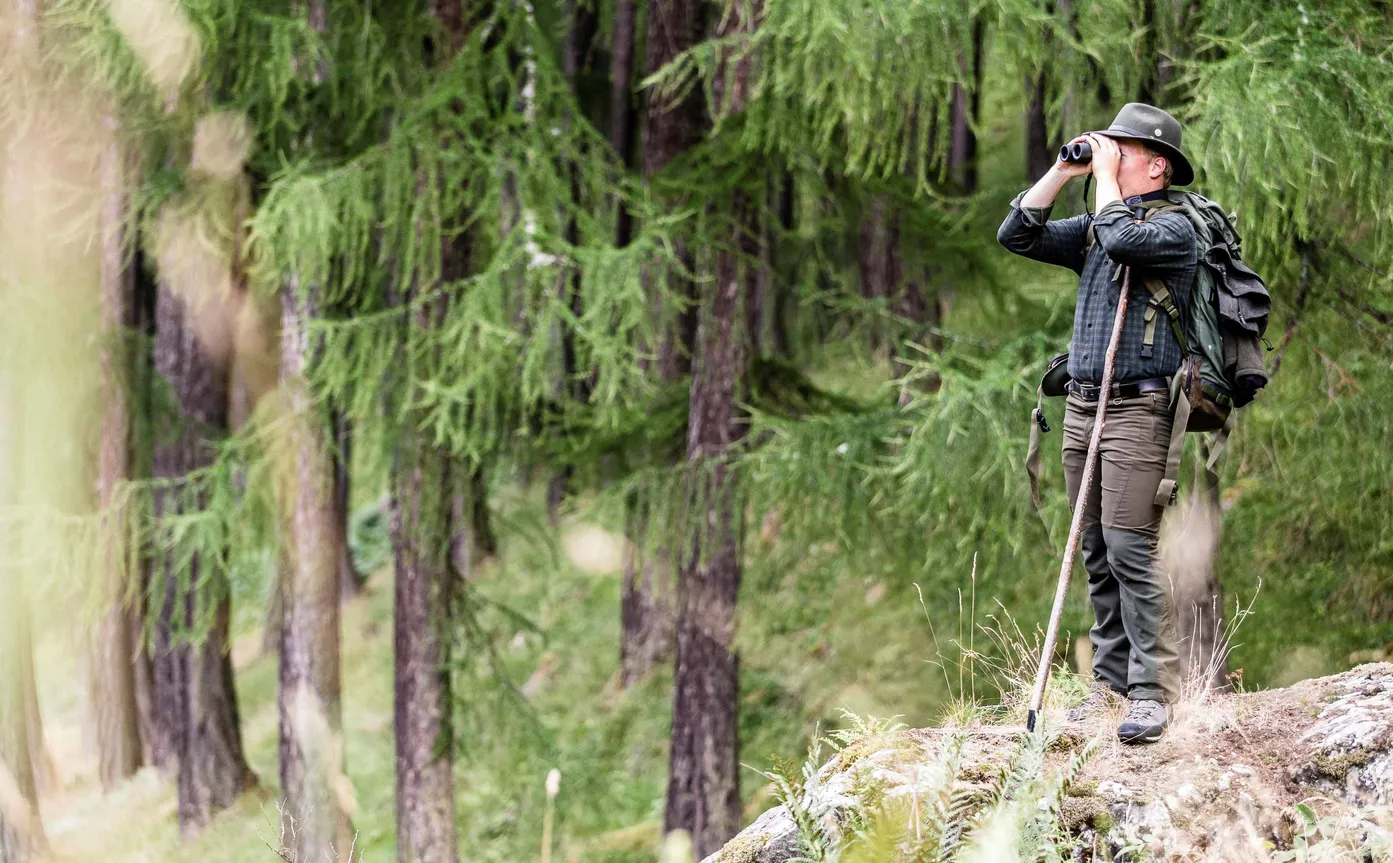Anyone who knows my junior boss Benjamin knows that he is a man of many passions. He has a particular weakness for dark-haired beauties with nimble legs. The object of his desire is called "Rupicapra rupicapra" and is - you've probably guessed it - nothing other than the chamois. These wild animals from the horned family - since the spelling reform spelled chamois in the plural, not chamois anymore - have been coveted sources of meat and fur in the Alps for centuries. Anyone who has ever eaten a Kaminwurze made from chamois meat knows why. And what would a traditional hat be without a proper chamois beard? It doesn't come from the chin of the chamois buck, but from the back. In general, the hunter's Latin book is full of special terms for the appearance and way of life of these animals. A pack of female chamois and their offspring is called "Scharwild" or "Geraffel", and when "Krucken" or "Krickel" are mentioned, they mean the horns. And when a chamois treats itself to a "Haberl", it takes a little break on the run.
Of magic stones and magic blood
When Benjamin talks about "his" chamois, he easily gets carried away. Anyone who has ever observed a chamois in the wild understands why. The climbing skills and surefootedness of these animals are extraordinary. A special spectacle is the rutting season in late autumn, when the bucks vie relentlessly for the favour of the most beautiful bucks and engage in wild chases over steep, rocky terrain. The keyword is hunting: it's no walk in the park. Even fit hunters like our Benjamin work up a sweat. After all, the chamois is way ahead of the hunter in terms of lung volume and jumping power. It is well known by now that hunters make an important contribution to the preservation of the wild fauna. Diseases such as chamois blindness and chamois mange can devastate entire populations if sick animals are not removed quickly. The hunters of the past did not know much about this, superstition gave chamois an almost magical reputation: especially chamois blood was considered a miracle cure and was paid dearly, also for bezoars - hairballs from the stomach of the animals - a lot of money was spent. It's a good thing that we know better today.
On the prowl with Benjamin
There is so much more to tell and write about chamois. But in "real life" everything is much nicer. Therefore, my well-meant advice: Just come to me in the Schnals Valley. Benjamin will gladly take you into the mountains and share his wealth of knowledge with you. Here are a few questions that he will be happy to answer: How do you tell the difference between a goat and a buck? How can you tell the age of a chamois? Why do you need a guide when hunting chamois? What is the best way to prepare a roast chamois? Why do people say "Hurray, the chamois!"?
Yours sincerely, Oberraindlhof
